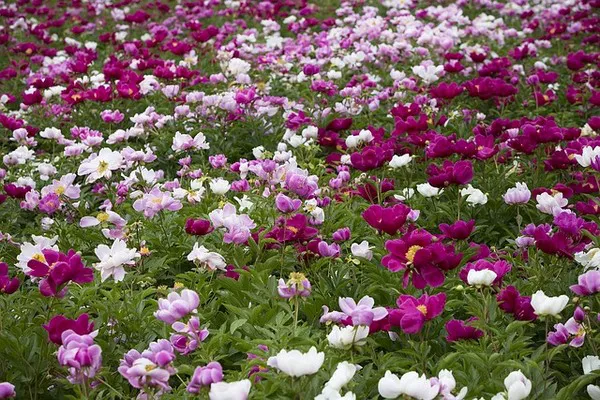Flowers have captivated human hearts for centuries with their beauty, fragrance, and symbolic significance. In the vast world of flora, flowers can be categorized into three main types based on their reproductive structures and features. Understanding these types not only enriches our appreciation for the botanical wonders around us but also aids in gardening, horticulture, and ecological studies. In this article, we delve into the three primary types of flowers – monocots, dicots, and magnoliids – exploring their characteristics, diversity, and unique contributions to the tapestry of nature.
Monocots: Simple Elegance
Monocotyledonous plants, commonly known as monocots, represent one of the two major groups of flowering plants. Characterized by their simple and elegant floral structures, monocots exhibit several distinctive features that set them apart from dicots and magnoliids.
Firstly, monocots typically have flower parts in multiples of three, such as petals, sepals, and stamens. This trimerous arrangement is a key diagnostic feature, visible in flowers ranging from lilies and orchids to grasses and palms. Additionally, monocots showcase parallel venation in their leaves, wherein the veins run parallel to each other, enhancing the overall aesthetic appeal.
Another defining trait of monocots lies in their embryonic seed leaves, known as cotyledons. Monocots have a single cotyledon, which serves as the initial source of nutrients for the emerging seedling. This characteristic distinguishes them from dicots, which possess two cotyledons.
Examples of monocot flowers abound in nature, with some of the most iconic representatives being members of the Lily family (Liliaceae), including tulips, daffodils, and lilies themselves. Orchids, renowned for their intricate and diverse floral forms, also fall under the monocot category, highlighting the versatility within this group.
Dicots: Nature’s Diverse Palette
Dicotyledonous plants, or dicots, constitute the other major group of flowering plants. Dicots exhibit a broad spectrum of floral structures, leaf venation patterns, and growth habits, making them the most diverse group among flowering plants.
One of the key characteristics of dicots is the presence of flower parts in multiples of four or five. This tetramerous or pentamerous arrangement distinguishes dicot flowers from monocots, providing a valuable clue for plant identification. Additionally, dicots typically feature reticulate venation in their leaves, with a branching pattern of veins that creates an intricate network.
Dicotyledons possess two cotyledons in their embryo, a feature that sets them apart from monocots. These seed leaves play a crucial role in the early development of the plant, providing essential nutrients until the true leaves take over the process of photosynthesis.
The diversity within dicots is staggering, encompassing everything from towering trees like oaks and maples to vibrant garden flowers such as roses and sunflowers. Roses, celebrated for their romantic connotations, exhibit a distinctive five-petaled structure, while the sunflower, with its large, disk-shaped inflorescence, showcases the versatility of dicotyledonous plants.
Magnoliids: Ancient Elegance
While monocots and dicots dominate the contemporary landscape, magnoliids represent a fascinating and lesser-known group of flowering plants. Magnoliids are botanically distinguished by the presence of primitive floral features, which set them apart from the more advanced structures found in monocots and dicots.
One of the defining characteristics of magnoliids is the arrangement of their floral parts in multiples of three, similar to monocots. However, magnoliids exhibit a unique combination of primitive and advanced traits, making them an intriguing intermediate group in the evolution of flowering plants.
Magnoliids often boast large, showy flowers and are frequently associated with aromatic compounds. The magnolia tree, belonging to the family Magnoliaceae, is a prime example of this group’s elegance and antiquity. Magnolias are renowned for their large, fragrant blossoms and distinctive cone-like structures, making them a popular choice in gardens and landscapes.
See Also What Can I Use For Plant Food For Cut Flowers
Conclusion
In conclusion, the world of flowers unfolds as a tapestry of diversity, with each type contributing its unique characteristics to the grand mosaic of nature. Monocots, with their simple elegance and trimerous floral parts, grace us with iconic blooms like lilies and orchids. Dicots, the epitome of nature’s diverse palette, range from majestic trees to charming garden flowers, each a testament to the adaptability of this group. Magnoliids, with their ancient elegance and primitive features, provide a glimpse into the evolutionary history of flowering plants.
Understanding the three types of flowers not only enriches our aesthetic appreciation of the natural world but also serves practical purposes in fields such as horticulture, botany, and gardening. Whether cultivating a garden, identifying wildflowers, or simply marveling at the beauty around us, the knowledge of monocots, dicots, and magnoliids enhances our connection with the intricate and fascinating realm of flowering plants.


